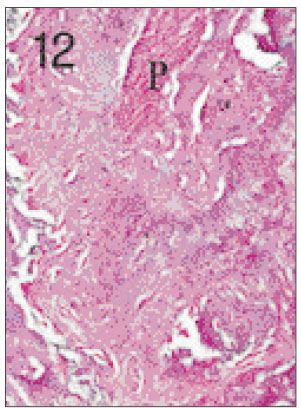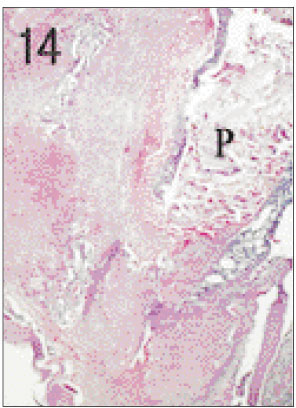Pulpal and periapical reaction to formocresol and depulpin® in the rat teeth
Article information
Abstract
One fifth dilution of formocresol is usually used for pulpotomy of the primary teeth and emergency pulpotomy of the permanent teeth. However, the use of formaldehyde has been subjected to criticism because it may be absorbed into the blood stream and become distributed systemically, it may also alter the pulp tissue rendering it immunologically active, and have carcinogenic potential. Recently Depulpin®(VoCo., Germany) gains popularity as a devitalizing agent during root canal therapy in spite of high concentration of 49% paraformaldehyde because it facilitate devitalization of pulp and make root canal therapy easier. But there have been not enough publications about the reaction of pulp and periapical tissue caused by Depulpin.
This study was performed to evaluate the histological changes in pulp and periapical tissue of rats after pulpotomy using formocresol and Depulpin and to elucidate the toxic effects of these agents. Thirty six Sprague-Dawley rats were anesthetized by intraperitoneal injection of ketamine. Maxillary first molar teeth were used for pulpotomy with formocresol and Depulpin. Rats were sacrificed after 2 days, 4 days, 1 week, 2 weeks, 3 weeks and 4 weeks respectively. Specimens were histologically observed by light microscope changes in pulp and periapical tissue. The obtained results were as follows.
1. Formocresol group
A zone of fixed tissue, in which odontoblasts could clearly be defined, was present directly underneath the pulpotomy dressing in almost all teeth of this group. This was followed by an area of necrotic tissue which resembled dried out fibrous tissue with no cellular detail except some pyknotic nuclei. In the specimens of after 2 days, 4 days, 1 week, 2 weeks in which vital tissue was present, it was separated from the fibrous area by a zone of inflammation. In the specimens of after 3 weeks and after 4 weeks, inflammatory infiltrate was in the periodontal ligament adjacent to the apical foramina of the teeth.
2. Depulpin® group
The area of necrotic tissue which had no cells and fibers, was present adjacent to the dressing. This was followed by dried out fibrous tissue with no cellular details except some pyknotic nuclei. A short stump of vital pulp with odontoblasts was present at the end of the canal after 2 days. Inflammatory infiltrate was in the periodontal ligament after 4 days and after 1week. Severe root resorption and necrosis of periapical tissue opposite the root resorption site were defined after 2 weeks and after 3 weeks. Periapical lesion which consist of necrotic tissue surrounded by a fibrous connective wall, was found after 4 weeks.
The results indicated that Depulpin can cause more adverse reaction to the dental pulp and periapical tissue than formocresol, and further studies are needed for its clinical use with safety.
Abbreviations
D
Dentin
PD
Predentin
PDL
Periodontal ligament
P
Pulp
C
Cementum
OD
Odontoblastic layer

















